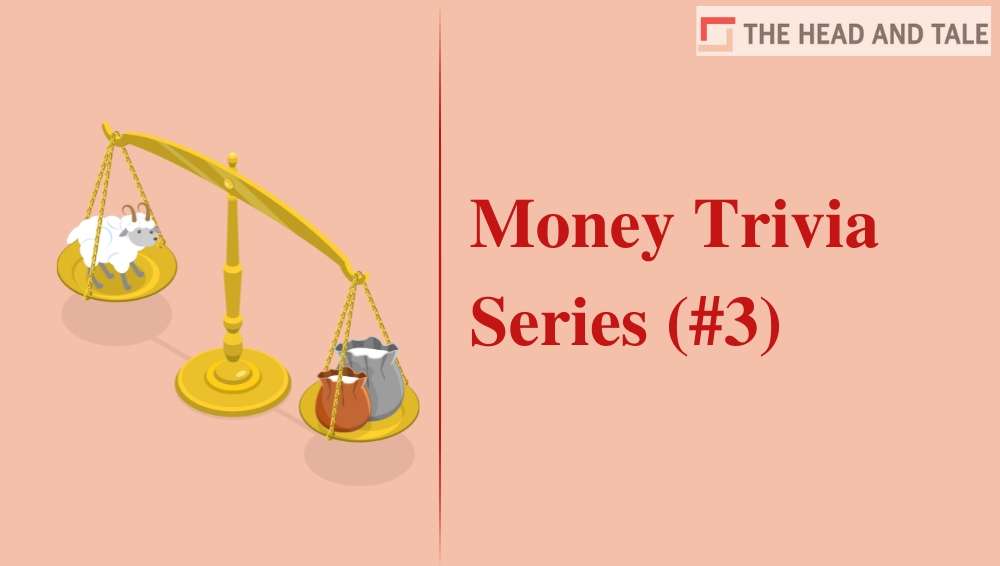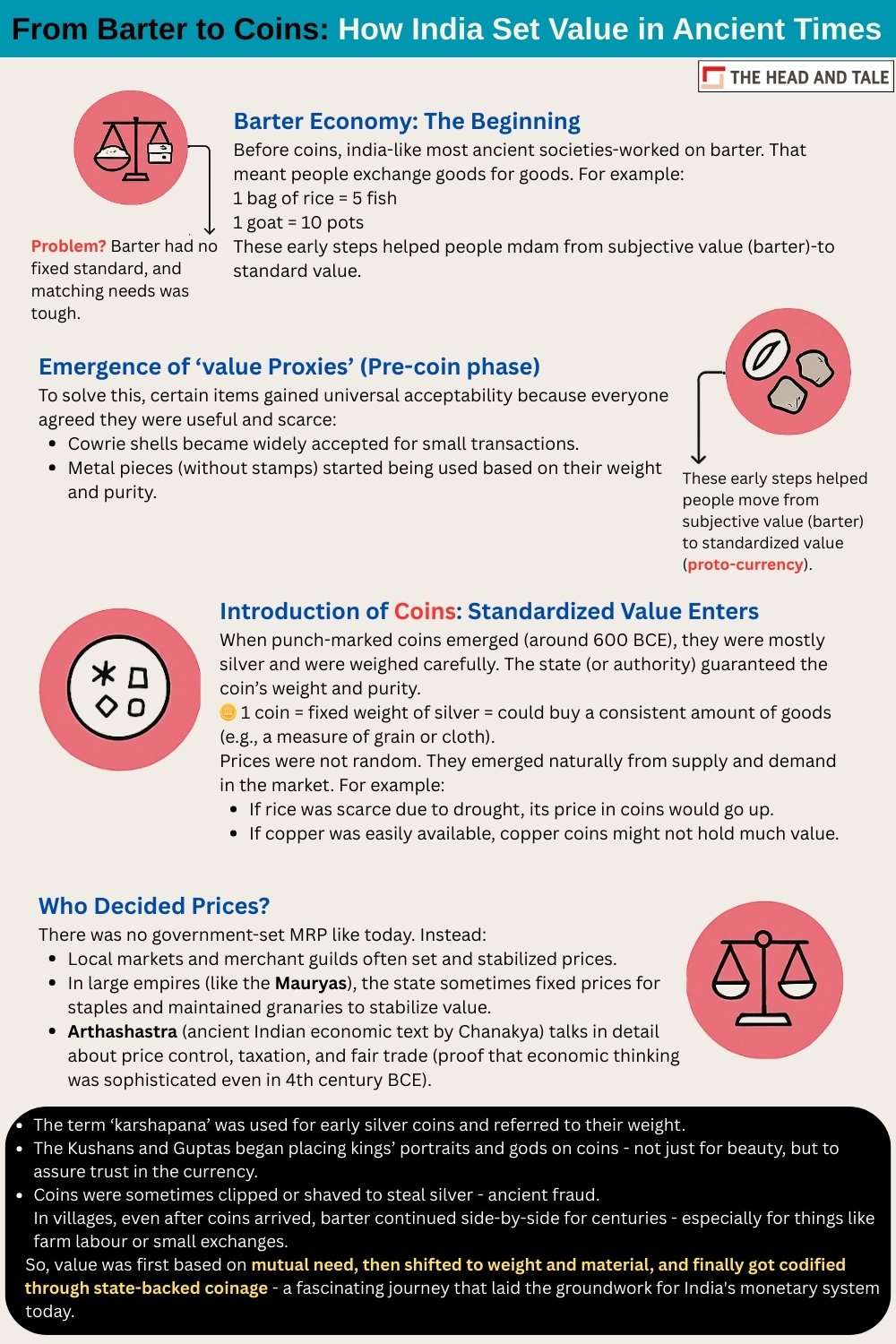

Ancient India's Hidden Fintech: How Value was Built Before Currency
12 Jul 2025, 01:01 AMFrom mutual need to weight and material to state-backed coinage - a fascinating journey that laid the groundwork for India's monetary system today.
Muskan Singh
Before India built UPI rails or dreamed of digital rupees, value was determined by goats and pots. A barter economy thrived on mutual need -- until mismatched wants made trade inefficient.
Enter India's early innovation in value systems: cowrie shells as micro-payment tools, unmarked metals traded by weight, and by 600 BCE, state-backed silver coins that functioned as the original stablecoins -- guaranteed by authority, trusted by markets.
There was no RBI, but local merchant guilds acted as decentralized price setters. The Arthashastra, centuries ahead of its time, debated price controls, taxation, and even fraud.
Much like today’s token economics and trust in code, ancient India moved from subjective barter to objective value standards -- laying the psychological and functional groundwork for everything from CBDCs to DeFi.
Even 2,000 years ago, India knew: for a market to scale, value must be trusted.










